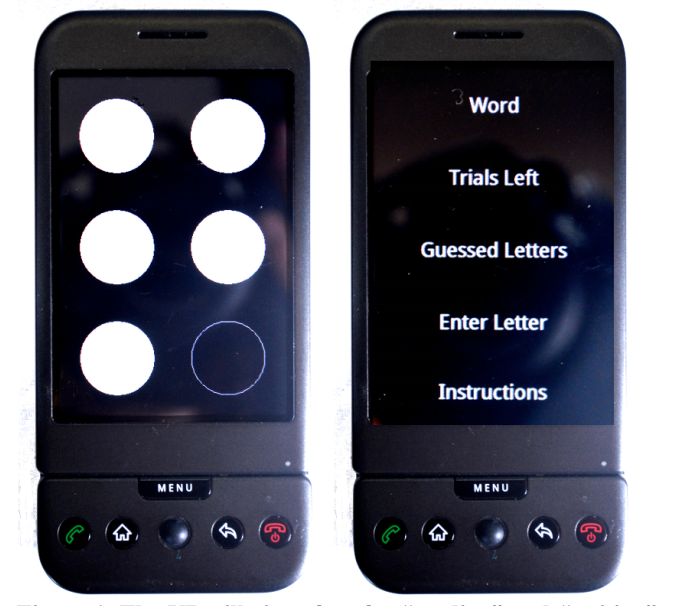
BraillePlay: Educational Smartphone Games for Children Who Are Blind
Longitudinal research study about the use of smartphones to teach braille concepts
A group of researchers from the University of Washington and Cornell present BraillePlay, a suite of accessible games for smartphones that teach braille encoding to promote braille literacy. There are many educational smartphone games for children, but few are accessible to children who are blind or visually impaired. The BraillePlay games are based on VBraille, a method for displaying braille characters on a smartphone. BraillePlay includes four games of varying levels of difficulty: VBReader and VBWriter simulate braille flashcards, and VBHangman and VBGhost incorporate braille character identification and recall into word games.
This paper presents a longitudinal study evaluating BraillePlay with eight children with visual impairments. Results indicated that all but one participant were able to play the games independently and reported that they found them enjoyable. There was also some evidence that some of the children learned braille concepts. This article discusses implications for the design of games for children who are blind or visually impaired and explores lessons learned.
Authors:
- Lauren R. Milne University of Washington, Seattle, WA, USA
- Cynthia L. Bennett University of Washington, Seattle, WA, USA
- Richard E. Ladner University of Washington, Seattle, WA, USA
- Shiri Azenkot Cornell Tech, New York, NY, USA
Lauren R. Milne, Cynthia L. Bennett, Richard E. Ladner, and Shiri Azenkot. 2014. “BraillePlay: educational smartphone games for blind children.” In Proceedings of the 16th international ACM SIGACCESS conference on Computers & accessibility (ASSETS ’14). ACM, New York, NY, USA, 137-144.
